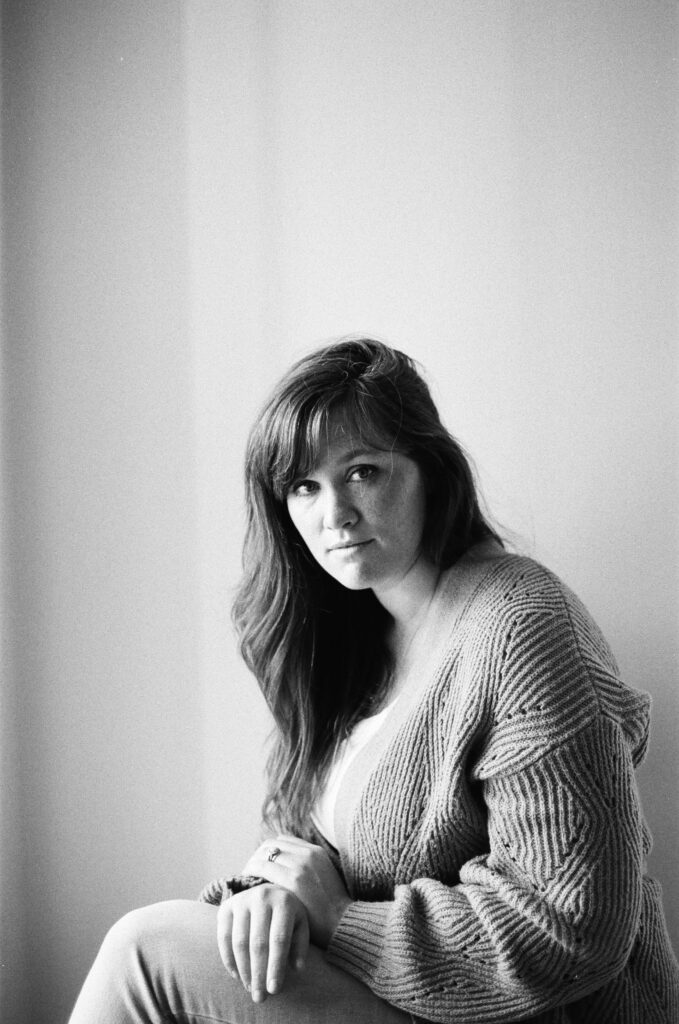Stonecoast Review
The Literary Journal of the Stonecoast MFA
Staff Spotlight
Ruth Towne

Ruth Towne is the author of So the Sadness Could Not Hurt and Resurrection of the Mannequins, both with Kelsay Books (2025). She is a graduate of the University of Southern Maine’s Stonecoast MFA, Class of 2018.
What do you write?
Poetry. But I occasionally venture into forms of prose.
Is there an author or artist who has most profoundly influenced your work?
There are so many! I am in perpetual awe at the works of Ocean Vuong, Layli Long Soldier, Mei-mei Berssenbrugge, Tracy K. Smith.
And I must always claim Anne Sexton.
Why did you choose Stonecoast for your MFA?
Stonecoast was a great option for me because it was low-residency. The structure of the semesters was ideal since I was working full-time at the time.
Residency was always incredible, but the asynchronous periods outside of the residency were really beneficial, since they helped me prepare for how writers actually find themselves working outside of the academic world.
What is your favorite Stonecoast memory?
Once, Justin Tussing referred to a sonnet as “kind of like the Toyota Corolla of poetic forms” in a lecture of Cate Marvin’s.
Her withering gaze almost turned him to stone, and appropriately so.
Probably neither of them remembers this, but I do not consider the sonnet without recalling it.
What do you hope to accomplish in the future?
I want to write more books! The more I read and write, the more I have ideas for writing.
Honestly, it would be an accomplishment just to get some of them down, the good ones I hope.
If you could have written one book, story, or poem that already exists, which would you choose?
“The Glass Essay” by Anne Carson, my current obsession. It is equal parts lyric essay and poem, a sum total of wonderful.
Poetry by Ruth Towne
Decalcomania with River and Bridge
This poem was first published by redrosethorns journal in April 2024. It appears in Resurrection of the Mannequins (Kelsay Books, 2025).
Over the railing of the bridge
below me but not so far, a river
disintegrates, it comes to an end
of sorts, it throws itself over,
over, into the ravine of serrate rocks,
irregular teeth at the river’s mouth.
Once, my husband demonstrates
how little it takes as we visit.
We stand together at the edge
looking below. I am warm in summer sun.
Vapor takes shape in the air after a storm.
I listen as he explains, I am still as water,
tranquil, as if on each of my daily visits
as I walk the road beside this river
I don’t consider going over,
which he doesn’t know.
Water releases water as drops,
body releases body as thought—
misting up, sinking down, in the air,
on the rocks. Water, body separate,
are separate, come together again.
I have wondered over this edge
of water times before. Once, I am five
inside the glossy shell of a green canoe
when I ride over inside my mind.
I try to stop then. A horizontal board
out of view makes that water’s edge,
a boundary somewhere under the water
for the water’s surface to sublimate,
to suppress. Bless the board, it holds me
from going over, however invisibly.
Here, the rail is thigh-high, perpendicular,
green as liberty, as the old canoe I keep
in my mind. All this—the bridge, the river
below the bridge, the cliff below the river
—all this waits for me. All this passes
a vacant mill graying, deteriorating.
That building lists toward water’s edge.
It does not remember what it was like
when its turbines first turned. But the river
remembers how it surged before the dam.
I am behind the rail at the bridge’s edge.
As is its habit, the bridge keeps practiced
in the air. As is my tendency, I visit here
to look at the river decomposing below.
So this is how I see myself go over:
first the bridge rail, head heavy, thoughtless
then thoughts lost in the air. In the air—
I hang there as long as possible,
suspended, pendant and pendent.
Since the bridge is not so high,
there is hardly time for me
to digress, to wonder between edge
of bridge and edge of water at the quiet
while the river lulls by, a music box
unwinding in dead air. For an instant
I am below the river below the bridge
as water catches me. It deadens
my fall. Then I float again, face to the base
of the bridge, flat on my back, in the black
and turbid current, feeling first
since I hanged there in the air
the changed way my body makes sense
of the water, how I can sense more
than temperature and pressure there,
how my body does not guess at sensation.
I feel what someone always ought to feel,
what the water ought to feel like now,
how water always was without me.
So afloat and knowing what going over
is like, then I could find the river’s edge
and climb out of the water,
and back to my senses again,
or maybe
I could stay floating almost over,
or not.
Of course, there are other bridges to go
over. I am ten when I come to know
a strange chain-weighted bridge
by its name, Memorial. Before this,
I name each bridge by its unique
feature or shape: Pillar, Mill, Metal Grate,
Four-Square, and Dinosaur, that high
and ancient frame scaled patina-green
and towering over the river-harbor’s mouth.
Then, at seventeen, I am driving over
that dinosaur, when I consider
pure distance—
White Mountains bounding the west,
Atlantic constraining the east,
all that water and air beneath me,
and I think to myself, Hold tight. Hold tight.
Here, not far off from bridge and river,
maples and pine trees cling to the riverside
as the river erodes rocks and boulders
leftover from ancient glaciers.
This landscape lives while I do.
It changes. It decays.
I have carried the image of the river
and the bridge with me all my life.
And I remember what it is like
with my father behind me
in the green canoe at the edge,
how surely the current will take us away,
how despite my crying he goes forward
pressing his oar toward the empty place
where the water falls
because it cannot go.
He keeps rowing.
Bless him, he keeps rowing.
Below me, the river deteriorates
the day my husband demonstrates going
where the bridge rail splits,
where the two sides of the bridge seam.
He slides easily, rainwater in a stream
between those pillars. He holds himself over
for an instant. And he considers it,
the plunge under into wet leaves and rotten
waterlogged branches in silt and mud.
When he returns from his odyssey
between the beams, he explains to me
what held him inside,
this expansion joint, a design
for the bridge to breathe.
Then he points below the other side
of the rail. He shows me the concrete
pillar of the bridge to which he swims,
his point of return in the current.
It’s my turn, so I point to a tiny horizon,
where the water falls
over the dam’s wood ledge,
where beside, a ladder rises
at the last moment
as I am back to the bridge
and the river, eye to the mist
as it rises up, sunk close to under
the water as it throws itself over,
where I am so close to going.
Bless it. Bless this river. Bless this bridge.
Bless this way of living as I go.
